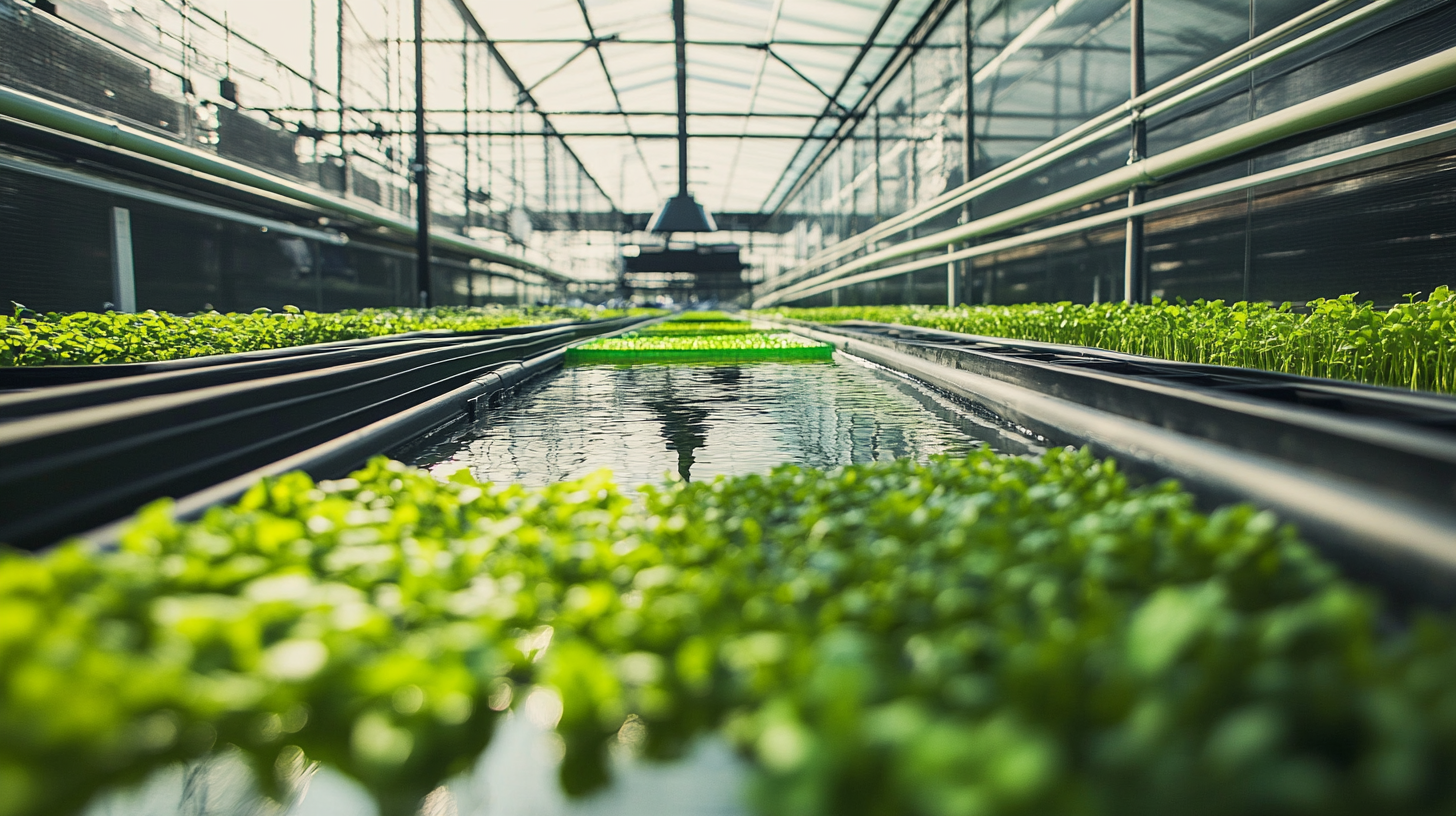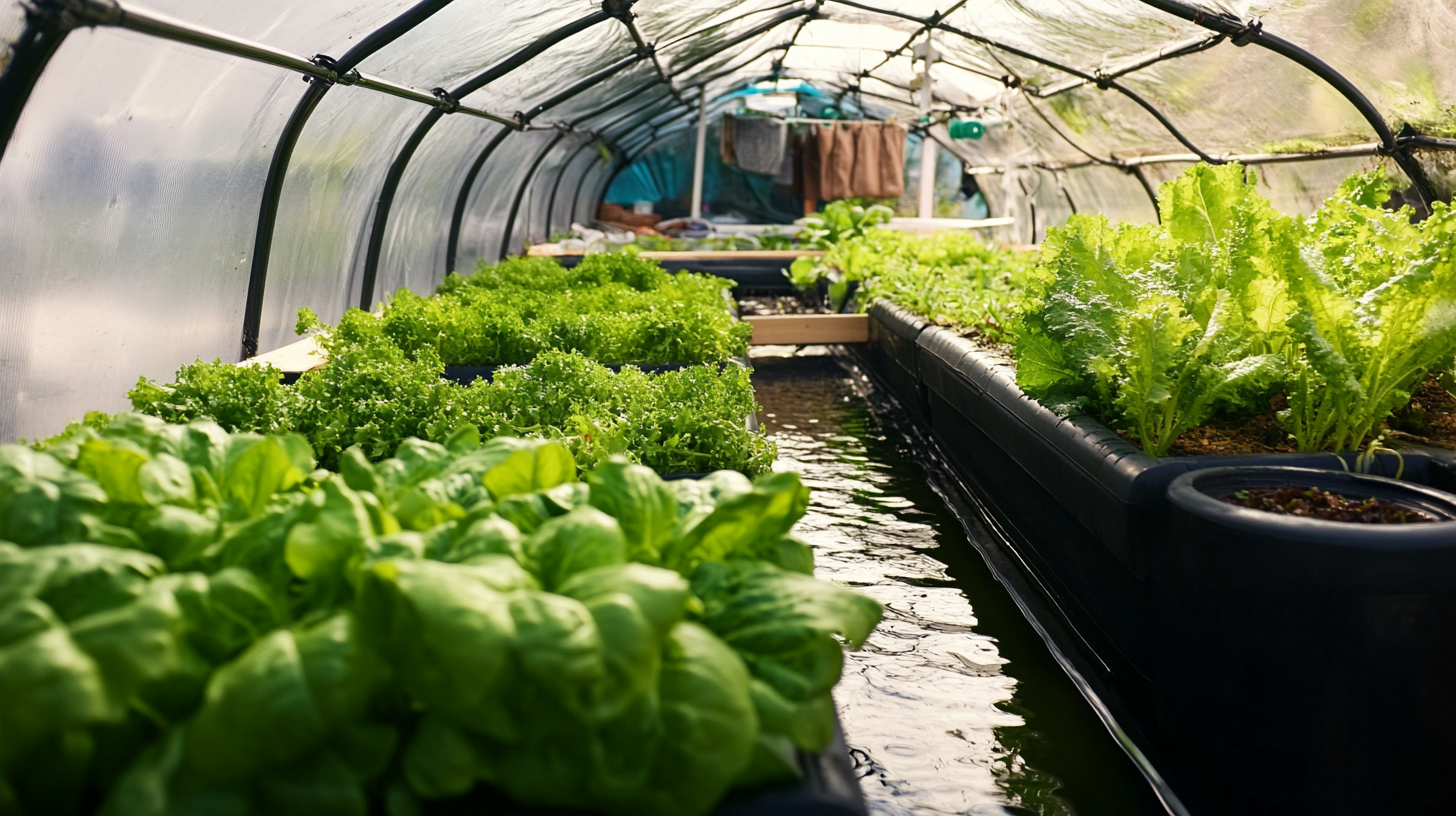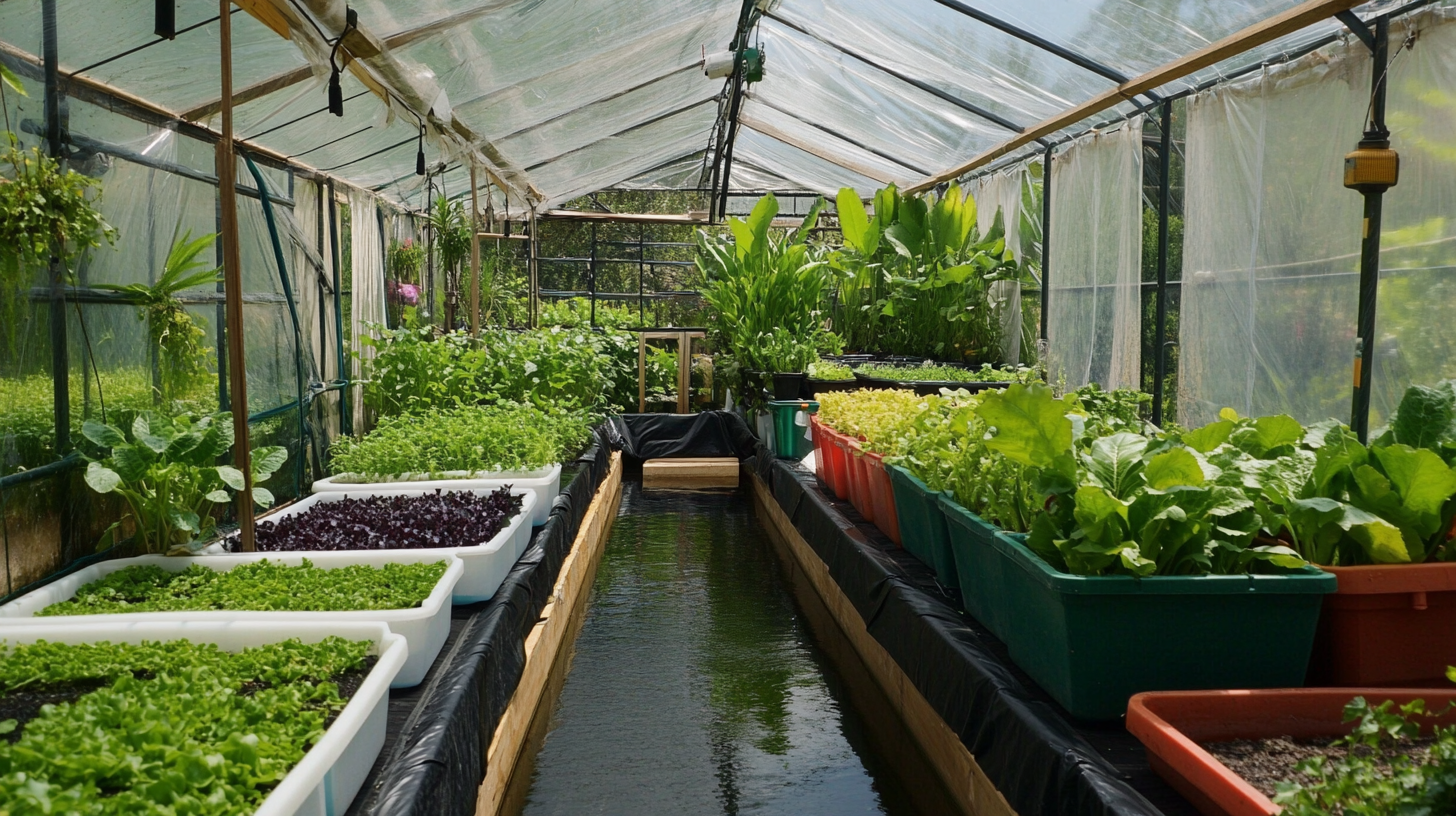
8 Innovative Strategies for the Best Aquaponics Greenhouse Success
In recent years, the concept of an Aquaponics Greenhouse has gained significant traction as a sustainable and efficient method for food production. This innovative system combines aquaculture and hydroponics, creating a symbiotic environment where fish and plants thrive together. As more individuals and communities seek alternatives to conventional farming methods, understanding the complexities of operating a successful Aquaponics Greenhouse becomes essential.

This blog will explore eight innovative strategies that can enhance your aquaponics experience, optimize plant growth, and ensure the health of your aquatic life. Whether you are a seasoned agronomist or a curious beginner, these practical tips will empower you to harness the full potential of your aquaponics system, paving the way for a productive and sustainable future in agriculture.
Innovative Greenhouse Designs to Maximize Aquaponics Efficiency
In the world of aquaponics, greenhouse design plays a pivotal role in optimizing efficiency and production. Innovative greenhouse designs, such as geodesic domes and controlled environment agriculture (CEA) structures, not only enhance space utilization but also improve air circulation and light distribution. These designs can help create an ideal microclimate for both fish and plants, ensuring that each component of the aquaponics system thrives. By integrating vertical farming techniques into these greenhouses, growers can maximize their crop yield while minimizing land use.
Additionally, incorporating smart technologies into greenhouse designs can lead to significant advancements in aquaponics efficiency. Automated systems that monitor humidity, temperature, and nutrient levels in real-time enable growers to respond swiftly to changing conditions. Using sensors and data analytics, aquaponics practitioners can fine-tune their setups, optimizing resource usage and reducing waste. These innovations not only increase productivity but also promote sustainability, making modern aquaponics greenhouses a model for environmentally friendly agriculture.

Harnessing Advanced Technology for Optimal Aquaponics Growth
In the world of aquaponics, advanced technology plays a crucial role in boosting efficiency and productivity. By integrating smart sensors and automation systems into your greenhouse, you can monitor and manage environmental conditions in real time. This means that parameters such as temperature, humidity, and nutrient levels can be adjusted promptly to ensure optimal growth for both plants and fish. Investing in these technologies not only simplifies daily operations but also enhances overall system performance.
Tip: Consider using IoT (Internet of Things) devices to gather data on your aquaponics system. These devices can deliver insights into plant health, water quality, and fish behavior, enabling you to make informed decisions that lead to improved yields.
Another innovative strategy involves utilizing energy-efficient LED lighting tailored for your specific crops. Unlike traditional lighting, LEDs emit less heat and can be customized to provide the optimal wavelengths for photosynthesis. This not only reduces energy costs but also creates an ideal growth environment, leading to faster plant development and increased produce quality.
Tip: Implement a controlled lighting schedule based on the natural light available to optimize energy usage and enhance plant growth cycles.
Growth Metrics of Aquaponics Systems
Sustainable Practices for Eco-Friendly Aquaponics Success
In the pursuit of sustainable agriculture, aquaponics stands out as a harmonizing blend of aquaculture and hydroponics, offering an eco-friendly solution for food production. By integrating fish farming with plant cultivation, this method encourages a symbiotic relationship where fish waste provides essential nutrients for plants, while the plants help filter and purify the water for the fish. This closed-loop system reduces waste and minimizes the need for chemical fertilizers, making it a compelling choice for environmentally conscious growers.
To maximize the eco-friendly benefits of aquaponics, adopting innovative practices is key. Utilizing renewable energy sources, such as solar panels or wind turbines, can significantly reduce the carbon footprint of greenhouse operations. Additionally, incorporating organic practices, such as companion planting and natural pest control, ensures that both fish and plants thrive in a healthy ecosystem. By focusing on sustainable techniques like these, aquaponics not only produces fresh and nutritious food but also contributes positively to environmental preservation, making it an indispensable approach for the future of farming.
Integrating Aquaponics with Smart Farming Techniques
In the realm of agriculture, the integration of aquaponics with smart farming techniques presents a transformative opportunity for growers. Smart farming leverages technology such as IoT sensors, data analytics, and automation to optimize resource usage and enhance productivity. By incorporating these intelligent systems into aquaponics, farmers can monitor environmental conditions in real-time, ensuring that both fish and plants thrive within their interconnected ecosystem. This automation not only saves time and labor but also minimizes waste, thereby promoting sustainability in food production.

Moreover, smart farming techniques enable predictive analytics that aid in decision-making. By analyzing historical data alongside real-time inputs, farmers can forecast the needs of their aquaponics systems more accurately. This foresight facilitates precise adjustments to water quality, nutrient levels, and even crop harvesting schedules, resulting in optimized growth cycles. The fusion of these innovative strategies not only maximizes yield but also promotes resilience against climate change and fluctuating market demands, making aquaponics a compelling avenue for sustainable farming.
Building a Strong Community Around Your Aquaponics Initiative
Building a strong community around your aquaponics initiative is essential for achieving long-term success and sustainability. Engaging local stakeholders, including community members, schools, and governments, can create a sense of ownership and shared purpose. Organizations like the Aquaponics Centre at the National Vocational and Rehabilitation Centre for Persons with Disabilities have demonstrated the power of collaboration, where exceeding expectations in food production and education has paved the way for potential expansions. This is a prime example of how well-structured community involvement can foster resilience and innovation in sustainable practices.
To effectively build and nurture your aquaponics community, consider these tips:
1. **Education and Training**: Host workshops and training sessions to educate community members about aquaponics systems. This not only empowers individuals with knowledge but also builds a network of skilled practitioners who can support each other.
2. **Partnerships with Local Organizations**: Collaborate with local NGOs and educational institutions to increase outreach and support. Initiatives like the one in South Saskatchewan, where First Nations are pursuing food sovereignty through agriculture projects, exemplify the impact of such partnerships in fostering community resilience.
3. **Utilizing Resources and Data**: Leverage existing research and data on sustainable practices, such as reports on climate adaptation strategies in Nigeria. This can help refine your approach and enhance credibility among community members, as well as attract funding opportunities for your aquaponics project.
Building a strong aquaponics community through education, collaboration, and research integration not only contributes to food security but also enhances social cohesion and environmental sustainability.
8 Innovative Strategies for the Best Aquaponics Greenhouse Success - Building a Strong Community Around Your Aquaponics Initiative
| Strategy | Description | Benefits | Community Engagement |
|---|---|---|---|
| Educational Workshops | Organize workshops to teach aquaponics techniques. | Increased knowledge and interest in aquaponics. | Builds a network of enthusiasts. |
| Community Support Groups | Form groups for sharing resources and experiences. | Enhanced cooperation and problem-solving. | Encourages collaboration among local growers. |
| Sustainable Practices Promotion | Advocate for environmentally friendly aquaponics solutions. | Reduction of environmental impact and costs. | Engages community in sustainability efforts. |
| Online Forums | Create online platforms for discussion and advice. | 24/7 support and information exchange. | Connects aquaponics practitioners worldwide. |
| Local Food Initiatives | Partner with local restaurants and markets. | Increased sales and visibility of aquaponics products. | Promotes local food sourcing. |
| Volunteer Programs | Engage community members through volunteering. | Increases labor and enhances community spirit. | Creates a sense of ownership in the initiative. |
| Social Media Campaigns | Utilize social media to share successes and tips. | Expanded outreach and public engagement. | Inspires more local projects and interest. |
| Aquaponics Research Collaborations | Partner with academic institutions for research. | Access to expertise and innovative techniques. | Strengthens ties between community and science. |
